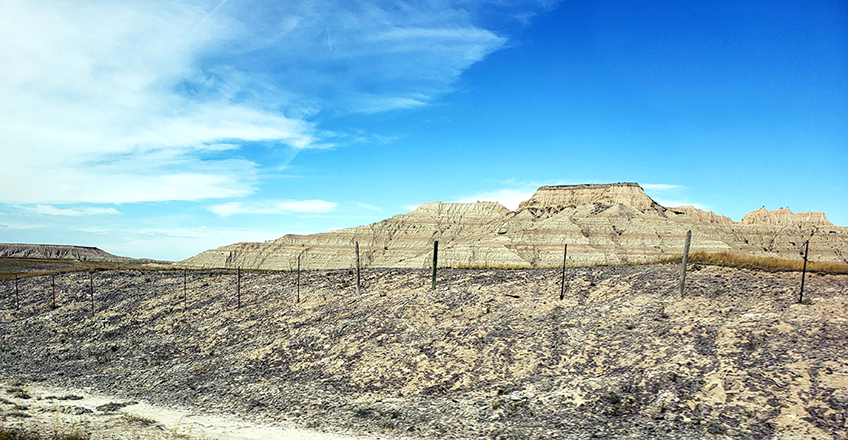The lesson, stated
Building partnerships provides a foundation for the work of your collaboration. Of course, the work you’re there to collaborate on is the evaluation or research. Now you need to consider how to build on the trust you’ve developed as a part of this partnership while conducting the research/evaluation activities. Working with communities whose experiences with evaluators and researchers have fostered a skepticism and apprehension about evaluation and research requires being intentional about how you interact with the people in those communities. Gathering the information necessary for this work will require you to be present, be prepared to fail forward, and not underestimate the role of trust and empathy in communication. Authentic relationships based on mutual trust support better information gathering processes.
The stories
Be Present
It can be easy to develop a professional "script" to guide interactions; you put on the mantle of your role as researcher or evaluator, and you speak and act as if that role is the only part of you that needs to be present when you are working in these communities. Similarly, it can be easy to think of being at a location as less important than the selection of research tools and models—and that one location is more-or-less like another. Resisting these temptations will help you build the kinds of connections with participants that will elicit the best knowledge.

Literal presence
Sometimes it can make little difference whether you’ve visited a particular location. After all, this is the motivation behind chain and franchise restaurants; one knows what to expect from the chain/franchise, and for the most part, the differences between the locations are minimal. However, understanding communities where the material conditions can differ radically from your own requires your presence in order to get the full sense of, say, a child welfare project in its context. As one CNCFR staff member put the point based on his own experiences:
You genuinely have to 'be there' to understand the project and its work. It was one thing to read documents and talk to staff in Zoom meetings about the work they do, but it is something else to visit the local community center and the child advocacy group’s office, participate in a sweat lodge, and experience the culture and geography of the community. Part of understanding the work being done involves sharing 'the space' where the work occurs.
Even assumptions about what a community or organization will find “easy” or “hard” are context-sensitive, with people’s motivation, context, understanding, and resources (including time) varying even for the people you are working with regularly:
It's difficult to know exactly where Tribal projects are at, from one Tribe to the next, at any given time. Since this occurred during the early stages of CNCFR work, it made me think of the need for something more that informs researcher or TA providers about how ready the project is to do something like the Pathway to Change (PTC). The PTC is not conceptually difficult; it asks questions that projects are generally situated to answer about conditions of their work (such as What We Build, What We Know, etc.). However, some projects had difficulty framing their understanding of their work in the tool’s terms, and it was critical for me to pay attention to how the tool was being received and prepare to help in ways I might not have anticipated.
Figurative presence
A second, more figurative—but equally important—way of "being present" means bringing your authentic self to the work without compartmentalizing. That is, it won’t be enough to arrive as "the evaluator"—you have to show up as your whole self. The people you’re working with likely don’t compartmentalize in this way. They will notice when you are compartmentalizing, and it will undermine their trust in you. If you are asking people to be vulnerable and real with you when sharing about their experiences, you must be prepared to be vulnerable and real with them throughout the process as well.
Some especially powerful testimonies resulted from this earnest sharing, which in turn provided better information about, and so greater insight into, the program and the way it affects the lives of the participants.
Over time you learn about people's lives and their personalities regardless of the context of how you first met. For example, when M. and I first met at the offices of the Tribe's Family and Youth Services, we were both initially courteous but reserved. As our work together unfolded, helping each other with the work of the partnership and participating in group web meetings, we became less reserved—though not less courteous! Exchanging small favors and kind words, even in the context of a work-based relationship; maintaining open, consistent communication and behavior; staying engaged and doing the things you said you would do; all of these were critical for building the trust and relationships necessary for our collaboration. As the relationships between project members and the Center team blossomed, it became clear to me that she appreciated the value of the partnership and the sincerity of the whole Center team, which made her more comfortable with sharing her own story in recorded interviews. She recounted in vivid, honest descriptions some of the dark times in her life and the good the program had done for her. It was inspiring to me to see her gift these personal stories, knowing they would be accessible to others, and it reinforced to me the importance of relationships and the benefits of relaxing the artificial separations we sometimes maintain between the work and personal sides of ourselves. M.'s honesty and openness had benefits for the program and for the community by validating the experiences of other women in the group, encouraging them to share their personal stories, and other ways as well, I'm sure.
Be Prepared to Fail Forward
Relationship-based work like this requires flexibility in planning that will allow you to adjust your methods to the opportunities and challenges that arise as well as the community’s needs and ability to provide information.
While you can consider methods and develop a plan for the work, you can’t expect to architect your approach ahead of time. Instead, you must come prepared to fail forward through iteration, revision, and even revisiting study questions. In sum, begin the work with the expectation that you will make mistakes and that your initial plans will need revision. Failing forward means you’ll be prepared to learn from your mistakes and develop solutions without defensiveness which will only hinder the work. By demonstrating vulnerability and humility during these missteps, you can build relationships, trust, and rapport with your partners, which will strengthen the work.
But [the failure of the first survey instrument] opened so many doors. We were able to use that failure as an opportunity to listen deeply to the women’s ideas about how they wanted to tell their stories. That time of reflection, where we were again able to deeply listen, take what we heard, and translate it into information gathering options like the personal reflection toolkit, was pivotal to success. We were able to share back our ideas for the personal reflection toolkit and show them that we heard them, we listened to what they said, and they were in fact in the driver's seat. That failure served the dual purpose of identifying an information gathering approach and continued to cement trust in the collaborative evaluation process.
Do Not Underestimate the Role of Trust and Empathy in Communication
Effective communication requires being able to put the thoughts you want to convey in terms that resonate with your audience. That might mean not using the words you typically do—you, after all, are not your audience. Understanding your audience requires listening empathetically when they speak and letting them tell you their stories. Empathy must be real and building trust takes time, commitment, and steadiness. Like in all relationships, it can be the small kindnesses that have a large impact.
As two CNCFR staff noted, even (perhaps especially) efforts to be reassuring need to resonate with the audience. For example, we wanted the projects we worked with to understand that we were there to help them conduct their own evaluation so they could tell the story of their program:
On almost every early call, I would say over and over, “this is your evaluation” which I think was important but also may have evoked uncertainty or a little anxiety about what that meant in practice… did that mean they needed to know all about evaluation? Did it mean that they were going to have to do a lot more work? Did it mean that we weren’t going to provide support? They didn’t know what they didn’t know when it came to all things evaluation. The frame of reference for evaluation was some disconnected Western-oriented data nerd who periodically bothered them about uptake into their program or quantitative measures of effectiveness for other grant obligations. That narrative is pervasive and accurate and one we continue to contend with.
Even here, it is not simply a matter of words, but of deeds: showing up, listening, building relationships. Especially at the outset, understanding how to say what you mean in a way that gets the uptake you want from your audience is critical:
Despite the project’s having applied to work with the Center, their staff and participants had many initial questions and trust issues related to the history of people mistreated by outsiders coming in to “evaluate” (or “help”). Knowing I walked with authenticity, and I would do all I could to support the community in a good way, I found it natural to use the word “trust” as though I could expect others to trust me; I would say things like, “you can trust me” in response to questions or to reassure the people I spoke with. While I firmly believe what I was saying was true, upon reflection, it became clear that I should have used language more open to letting the team know that I understood their hesitation to take a leap of faith and trust me; a better way of putting what I was trying to say: “I will do everything I can to earn your trust if you give me the chance.” After all, I was committed to supporting the community and earning the trust throughout the work together. The reality is that the community was considering trusting me with information that was extremely valuable, confidential to the participant, and potentially made all who were a part of the program vulnerable. Throughout the process, I worked to demonstrate through my actions that I could be trusted, that the community was safe with me and their information would be treasured and protected. On the last day of the final site visit, as the local team facilitated a celebration for the participants of the program, the previous supervisor of the department came up to me and said, “you told me to trust you… and I am glad I did.” It was a huge moment; I had recognized throughout the project that asking people to trust me was a complicated request, and I knew I had to earn that trust.
At the end of the culmination of our work together, the local team scheduled and facilitated a celebration for the participants of the group. It was an amazing celebration honoring the women who were in the program. At the end of the celebration, a community Elder and leader came up to the table of the Center team members. She looked at the Center team in attendance, and we all became very quiet anticipating that she was about to speak. The woman spoke eloquently and deliberately, saying, “we have not had a good experience with evaluators in this community” followed by a purposeful pause. As the silence felt deafening as we were unsure where she was going with the statement, she then stated, “so you need to teach others what you have done.”


